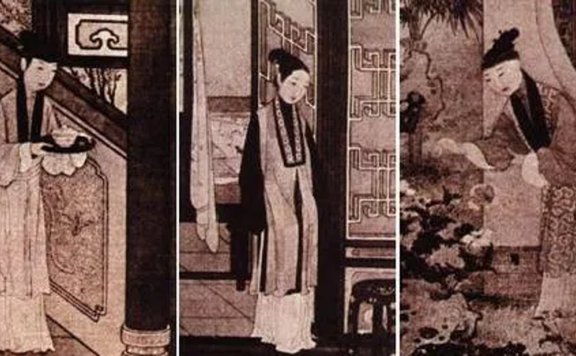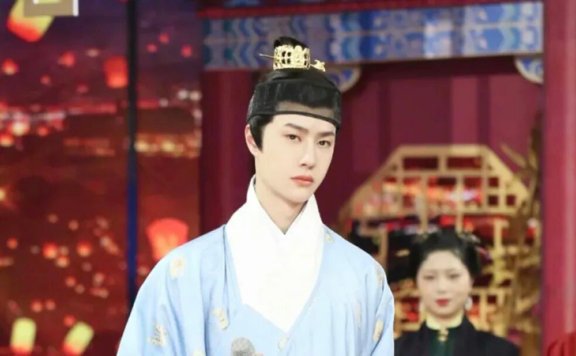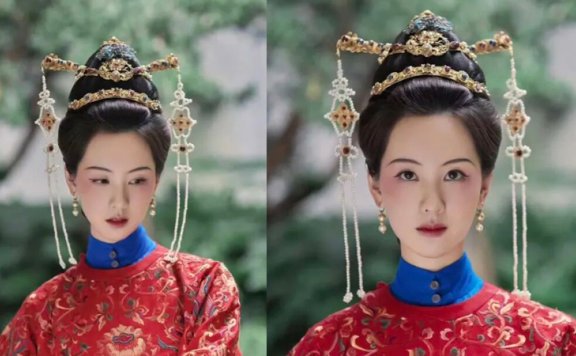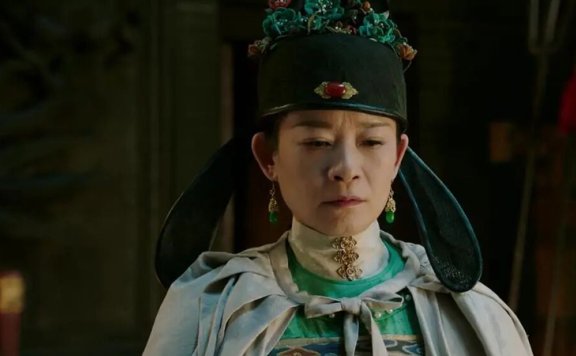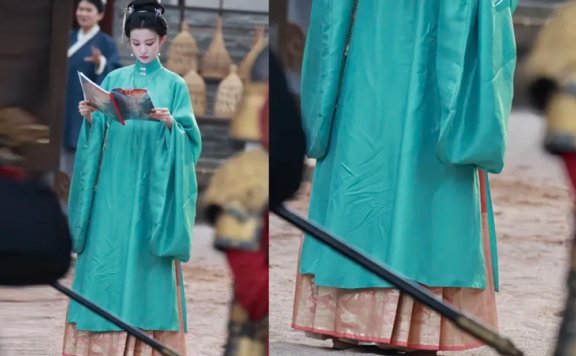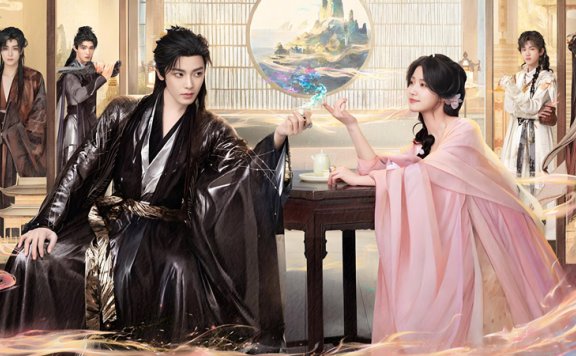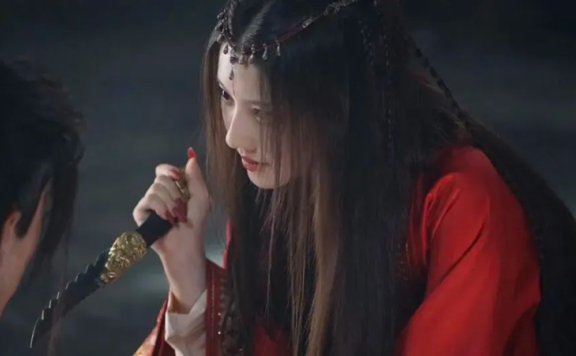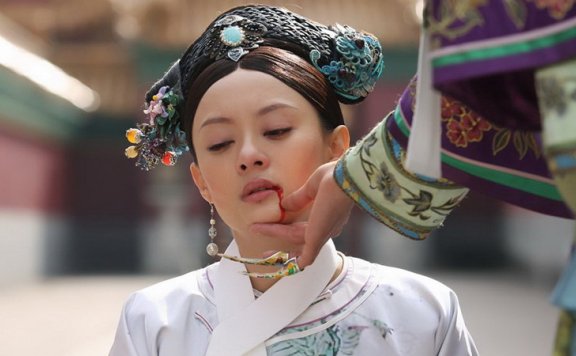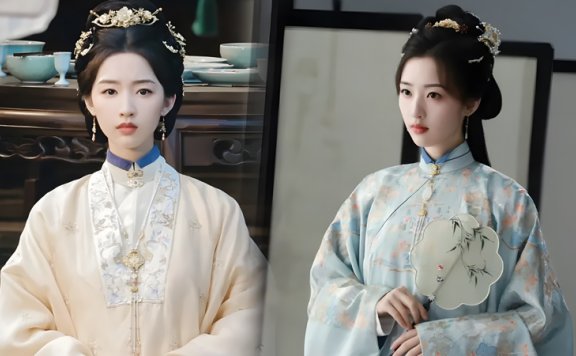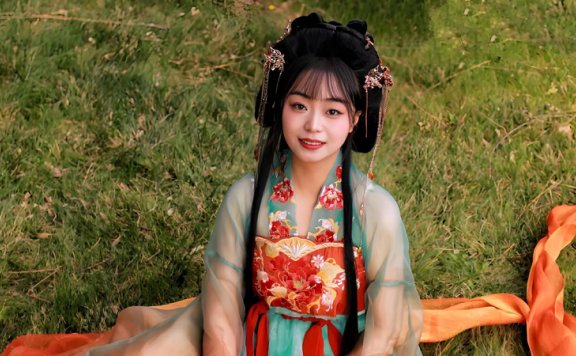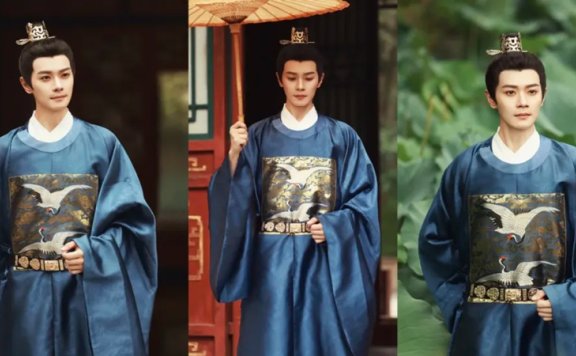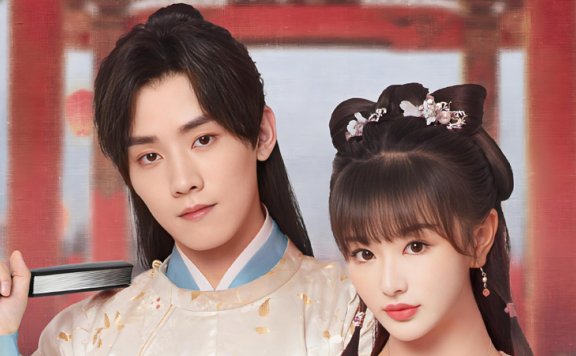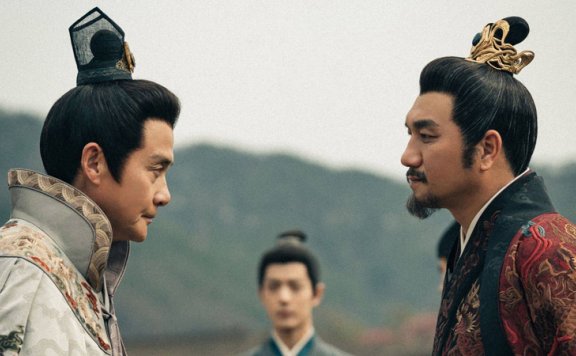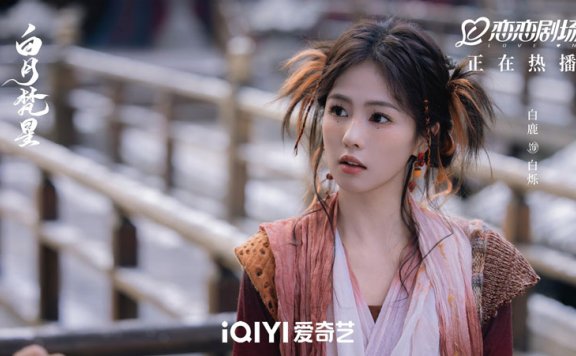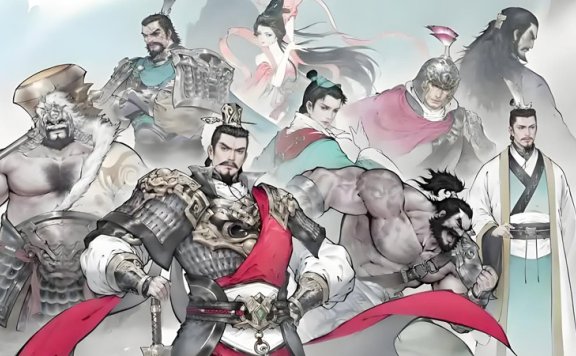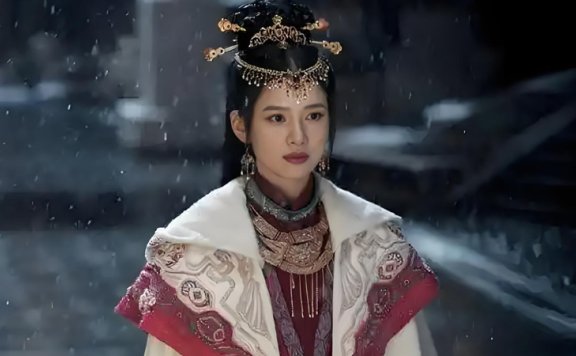Article
搜索结果:
-
How Did a Humble Riding Jacket Become the Runway Star of the Ming Dynasty?
Imagine a garment so versatile it bridged the gap between the dusty plains and the gilded halls of imperial palaces. This was the journey of the Bijia (比甲), a sleeveless jacket that evolved from a Mongol practical essential into a defining icon of Ming Dynasty fashion. Its story is not merely one of changing hemlines and fabrics, but a fascinating reflection of cultural exchange, social mobility, and aesthetic innovation. By tracing its path, we uncover how clothing can transcend its original purpose to become a canvas for identity and artistry. Saddle to Street The Bijia's origin is rooted in utility. Designed during the Yuan Dynasty under Empress Chabi (察必) of the Khongirad tribe, its primary function was to facilitate riding and archery. The classic design featured a front opening secured by ties, no sleeves or collar, and a back panel longer than the front. This ingenious cut protected the rider's core from wind while allowing complete freedom of movement for the arms. Initially, it was apparel for the steppe and the aristocracy, a common sight in the Yuan court but rare among the general populace. Following the Yuan-Ming transition, one might have expected this distinctly Mongol garment to fade. Instead,… -
Wang Yibo's Hair Net: A Ming Dynasty Fashion Statement or Modern Mystery?
When Chinese actor and singer Wang Yibo (王一博) appeared on the variety show Day Day Up (天天向上) years ago, a specific costume detail ignited online curiosity. His headpiece, resembling a sparse fishnet, led many to wonder if it was a styling error. However, this accessory was a deliberate choice, rooted in centuries of tradition. Far from a mistake, it represents the Wangjin (网巾), a functional hair net from China's Ming Dynasty. This glimpse into historical fashion, facilitated by a modern celebrity, opens a window to understanding how everyday items from the past carried significant cultural weight. The conversation it sparked highlights a common disconnect between contemporary perceptions and historical reality, urging a closer look at the artifacts that shaped daily life in ancient China. Origins and Use The Wangjin was a foundational item in the wardrobe of Ming Dynasty men. Designed as a mesh net, its primary function was to bind one's hair, or bundle the hair, containing loose strands and creating a neat base for headwear. Its adoption was not merely a fashion trend but a practical solution for managing hair, which was typically worn long. The net also provided grip, preventing hats and official headdresses from slipping during… -
Could You Survive at a Ming Dynasty Dinner Table?
Imagine stepping into a bustling street in 16th-century Nanjing. The air is thick with the sizzle of woks and the warm, yeasty smell of steamed buns. From the grand banquets of the scholar-elite to the simple, hearty meals of artisans, the Ming Dynasty was a golden age of Chinese gastronomy. It was an era where culinary traditions solidified, new ingredients whispered of distant lands, and the social ritual of eating reflected a vibrant, commercial society. This wasn't just about sustenance; it was a daily celebration of flavor, technique, and connection. The Staple Foundation The cornerstone of any meal was grain. A clear north-south divide existed: wheat reigned in the arid north, while rice dominated the watery south. Northerners enjoyed a stunning array of noodles, steamed buns, and flatbreads. Southern bowls were consistently filled with fluffy white rice or comforting congee. Interestingly, the New World crops we associate with China today—corn, sweet potato, potato—had arrived by late Ming. Yet, they remained curiosities or famine-relief foods for the poor. A Ming diner would stare blankly at a plate of french fries or a bowl of sweet potato noodles. Their staple world was built on ancient, familiar grains. Meat on the Menu If… -
Why Are We So Obsessed With a Ming Dynasty Hairstyle?
A modern celebrity steps out in full historical regalia, and the internet buzzes. When actress Chen Duling (陈都灵) recently appeared in a meticulously crafted Ming Dynasty (明朝) ensemble, the focus wasn't just on the gorgeous silks. It was the towering, intricate headdress that captivated everyone. This wasn't mere costume play. It was a portal to a world where hair was architecture, and every pin held meaning. Her look taps into a growing fascination with historical accuracy and the sophisticated beauty standards of ancient China, proving that an elaborate 500-year-old hairstyle can feel strikingly relevant today. Architecture for the Head The foundation of Chen's look is the Jiaji (鬏髻), a pivotal Ming invention. This was not just styled hair. It was a wearable structure. Artisans created a lightweight frame from wire or bamboo, then meticulously covered it with real hair or silk. Worn over the wearer's own tied-up locks, it instantly added height and volume, creating a majestic silhouette. Available in styles like the Luohan Ji (罗汉鬏) or Shuangfeiyan (双飞燕), these were purchased ready-made from shops, much like buying a statement hat or hairpiece today. The Jiaji was more than a trend; it was a necessary canvas for the stunning jewelry… -
How to Become a Female Official in Ming Dynasty?
What if you could bypass marriage and become a career woman in the Ming Dynasty? In an era dominated by the saying "a woman without talent is virtuous," the path for women was overwhelmingly prescribed: domestic confinement, learning needlework, and accepting an arranged marriage. Yet, a remarkable alternative existed behind the towering vermilion walls of the Forbidden City. The imperial palace offered a select group of women a chance to become female officials, known as Nüguan (女官). These were not mere servants but educated administrators who managed vast swathes of palace operations, from finances and rituals to education and security. This was a rare space for female agency within a rigidly patriarchal system. The Selection Becoming a Nüguan was an arduous process with intense competition. Candidates, typically aged between 13 and 20, had to meet stringent criteria. Their family background was scrutinized; they had to come from "good families"—often the daughters of low-ranking officials or commoners, but not from professions like medicine or commerce. This ensured their loyalty and prevented powerful clans from gaining internal influence. Physical appearance required dignity, not dazzling beauty, as these women would represent the imperial household. The evaluation of moral character was particularly severe. Local… -
Xin Yunlai's Controversial Hat in The Ming Dynasty Youth
When Xin Yunlai (辛云来) appeared in behind-the-scenes photos for the new historical drama The Ming Dynasty Youth (明月录), set in Ming Dynasty China, social media erupted with comments about his costume. Many users claimed his wide-brimmed hat resembled styles from Korean historical dramas, igniting a debate over cultural influences. However, this headwear is actually a traditional Chinese item known as Damao (大帽), commonly worn by scholars and officials during the Ming era. This misconception highlights a broader issue where media portrayals can blur historical origins, leading audiences to misattribute cultural elements. As historical shows gain global popularity, understanding the authentic roots of such attire becomes crucial for preserving heritage and fostering accurate cultural appreciation. The drama, starring Xin Yunlai and Wang Churan (王楚然) in their first Ming-era collaboration, serves as a reminder that entertainment can shape perceptions, making it vital to delve into the facts behind the fashion. Hat Origins The Damao featured in The Ming Dynasty Youth is characterized by its broad, straight brim and varied shapes, from tall to short, and round to nearly square. Crafted from materials like bamboo, palm leaves, or felt, it was designed for practicality, offering protection from sun and wind during outdoor activities.… -
Wang Churan’s Floor-Grazing Top in The Ming Dynasty Youth
In the popular period drama The Ming Dynasty Youth (明月录), actress Wang Churan (王楚然) wears a long, flowing top that extends to her ankles, nearly obscuring the skirt beneath. This styling choice has sparked online debates about historical accuracy and fashion sense. Viewers question whether such lengthy garments were common in ancient times and if they diminish the visual appeal of traditional attire like the horse-face skirt. The discussion highlights a broader curiosity about how historical clothing influences contemporary costume design in television. This article explores the origins and significance of these elongated tops, tracing their roots to the late Ming Dynasty and examining their modern reinterpretations. Historical Roots During the late Ming period, particularly after the mid-Jiajing (嘉靖) era, women's fashion saw a shift toward longer, more subdued garments. Historical records, such as those by scholar Yang Shen (杨慎) in his work Sheng'an Waiji (升庵外集), note that women's tops resembled men's attire in length, often hanging just above the ground. This style emphasized a slender, effortless silhouette, with sleeves so wide they could span over a meter. The trend reflected societal changes, as economic pressures led to a preference for simplicity over opulence. Garments from this era, like those… -
Love in the Clouds: 3 Errors Make Mingyi’s Soul Fade
In the intricate tale of Love in the Clouds (入青云), many viewers overlook the subtle cracks in the bond between Ming Yi (明意) and Ji Bozai (纪伯宰). Their connection, forged in strength and shared trials, unravels not from external threats but internal missteps. He possessed the power to shield her from foes like Mu Qibai (沐齐柏), yet a critical failure to obtain Huangliang Meng (黄粱梦) for her detoxification set a irreversible decline in motion. Ji Bozai's love for her was undeniable, but his actions spoke of oversight. Beyond the missed antidote, he neglected the emotional nuances that sustained their partnership. In moments where she needed reassurance, he withdrew into practicality, leaving her isolated. The gradual withering of her Li Hen Hua Ban (离恨花瓣) became a metaphor for her fading spirit, each fallen petal echoing his unaddressed errors. Had he bridged that gap, she might have clung to affection despite the physical decay. Their relationship, initially a facade, deepened into something real, yet he treated it with the detachment of a strategist. When Yuan Shen Ji Mie (元神寂灭) loomed, it was not the poison alone that pushed her away, but the accumulation of small betrayals—times he chose duty over her whispered… -
Song Mingzhu’s Character Arc in The Journey of Legend
What happens when a loyal follower starts defending their idol's greatest rival? In the Wuxia drama The Journey of Legend (赴山海), the complex relationship between Song Mingzhu (宋明珠) and her master Liu Suifeng (柳随风) takes an unexpected turn when she shows admiration for his sworn enemy Xiao Qiushui (萧秋水). This character dynamic reveals much more than simple conflict—it shows how genuine chivalry can change someone's worldview. Different Loyalties Song Mingzhu stands out among Liu Suifeng's followers. She possesses exceptional martial skills and unwavering devotion to her master. Growing up in the competitive Jianghu world where strength determines survival, she has learned to be both powerful and obedient. Her eyes betray deep emotion whenever she looks at Liu Suifeng, yet she maintains proper distance, nurturing unspoken feelings she dare not reveal. When White Phoenix confronted her about these hidden emotions, she reacted with shy confusion rather than anger. This moment revealed her softer nature beneath the tough exterior required by her position. Unlike others in the martial world, she finds ways to comfort herself even when neglected, always hoping for just a glance of recognition from the person she respects most. Her character shows that true strength doesn't require complete hardness.… -
Guide to 7 Must-Watch Chinese Palace Scheming Dramas
Behind the gilded gates of ancient China's palaces, a different kind of battlefield emerged. Palace scheming dramas unravel these secrets, pulling viewers into a world where love, power, and betrayal collide under the shadow of the dragon throne. Each series is a labyrinth of moral ambiguities, where survival demands more than beauty or birthright—it requires cunning, resilience, and the courage to sacrifice everything. As we step into this realm of forbidden intrigues, one question lingers: in the quest for supremacy, can anyone emerge unscathed? From Qing Dynasty tales to Han Dynasty epics, here are 7 must-watch palace scheming dramas that define the genre. Empresses in the Palace 甄嬛传 Aired: 2011 Period Background: Qing Dynasty (1722–1735) Genres: Historical, Political Intrigue, Romance Main Roles: Sun Li (Zhen Huan), Chen Jianbin (Emperor Yongzheng), Cai Shao Fen (Empress Chunyuan) Adapted From: Liu Lianzi's novel Empresses in the Palace Plot Overview Zhen Huan begins her journey as an idealistic young woman reluctantly entering the Qing Dynasty court during Emperor Yongzheng's reign (1722–1735). Initially naive and hopeful, she seeks genuine love but soon witnesses the brutal realities of harem politics. Her transformation into a cunning strategist is triggered by systemic betrayal and violence. For instance, after… -
Deng Enxi's Ming-Era Hanfu in When the Flowers Bloom Radiate Poise
The historical drama When the Flowers Bloom (花开锦绣), starring Deng Enxi (邓恩熙) and Ding Yuxi (丁禹兮), has sparked lively discussions among viewers, particularly for its attention to Hanfu inspired by the Ming Dynasty. Set against a backdrop of imperial intrigue and personal growth, the series follows the journey of Deng's character as she navigates court life, with her wardrobe evolving to reflect her status. Many have noted that Deng appears more dignified and elegant in these costumes compared to her previous roles. This article delves into the craftsmanship, styling, and visual storytelling behind this transformation, exploring how Ming-style attire enhances character portrayal and why it resonates with modern audiences seeking authenticity in period dramas. Costume Craftsmanship In When the Flowers Bloom, Deng Enxi's wardrobe primarily features Ming Dynasty styles, such as the standing-collar robe paired with a Mamianqun (马面裙). The costumes incorporate techniques like gold-woven patterns and subtle embroidery, which were hallmarks of Ming nobility. These elements not only add richness but also convey the character's rising social standing through intricate details that catch the light differently on screen. One reason the attire appears so dignified is its balanced use of fabrics and decorations. For instance, gold-thread weaving and floral… -
How The Ming Dynasty's Costume is Captivating the Modern World
Have you ever wondered what makes a garment more than just fabric? In the bustling streets of modern China, a style from centuries past is making a stunning comeback. This is not merely a fashion trend; it is a journey into an era where clothing was a language of its own, speaking volumes about status, artistry, and identity. The sartorial legacy of the Ming Dynasty offers a unique window into a world of sophisticated aesthetics and social order, a world that continues to captivate designers and cultural enthusiasts today. Its appeal lies in a powerful combination of structured elegance and deep symbolic meaning, providing a rich source of inspiration far beyond the history books. Iconic Silhouettes Several key elements define Ming attire, making it instantly recognizable. The most famous is arguably the Mamianqun (马面裙), or "horse-face skirt." This ingenious design featured four overlapping panels—two in the front and two in the back—with pleated sides. When the wearer walked, the skirt created a graceful, flowing wave-like motion. Its design was both slimming and practical, allowing for ease of movement. Today, it remains a cornerstone of any Hanfu enthusiast's wardrobe, celebrated for its timeless elegance. Another defining feature was the stand-up collar,… -
Cao Jun's Ming Attire: Is This the Grown-Up Nezha?
When Cao Jun (曹骏) recently shared photos in Ming-style Hanfu, fans were stunned—many saw echoes of his childhood role as Nezha (哪吒), sparking online buzz about his transformation and the timeless elegance of traditional Chinese attire. This resurgence highlights how modern celebrities can bridge history and today, making ancient garments relevant in our fast-paced world while protecting cultural heritage from misappropriation. As discussions flourish, it's clear that Cao Jun's choice isn't just fashion; it's a statement about identity and continuity in a globalized era. Ming Official Attire Ming Dynasty official clothing featured three main types: Changfu (官服) for daily wear, Gongfu (公服) for formal events like meetings, and Chaofu (朝服) for grand ceremonies. Each served distinct roles, with Changfu (常服) resembling professional suits through its long robe design—often with round or crossed collars and wide sleeves. Officials wore these as standard work attire, where visual cues like embroidered patches signaled rank without confusion. The key element in Changfu was the "Buzi" (补子) patches, small embroidered squares on the chest and back that instantly conveyed status. Unlike Gongfu, which used subtle patterns and colors for differentiation, Changfu relied on these vivid symbols to avoid ambiguity during routine duties. Historical records show… -
Ming Dynasty Hanfu: Ancient Artistry Reborn in Modern Fashion
In the vibrant tapestry of Chinese cultural heritage, Hanfu emerges as a radiant thread weaving through millennia of tradition. Among its most celebrated expressions, Ming Dynasty Hanfu stands as a pinnacle of sartorial artistry, where imperial aesthetics met technical mastery. This sartorial legacy transcends historical costume to become a living dialogue between past and present, offering contemporary wearers both beauty and cultural connection. The distinctive silhouettes and symbolic details developed during the Ming era continue to inspire designers and cultural enthusiasts worldwide. Form and Structure When Zhu Yuanzhang (朱元璋) established the Ming Dynasty, he initiated a sartorial renaissance by decreeing a return to Tang and Song clothing traditions. This restoration movement refined over twenty years culminated in the Hongwu (洪武) period's comprehensive dress code that balanced reverence for antiquity with Ming innovations. The resulting garments established new standards in Chinese textile history through meticulous tailoring and thoughtful design principles. Women's attire featured harmonious combinations like the Ao Skirt (袄裙) pairing fitted upper garments with voluminous lower skirts that created graceful movement. The iconic Ma Mian Skirt (马面裙) demonstrated particular ingenuity with its four overlapping panels and side pleats that produced elegant swirling motions. Supplementary layers including Yun Jian (云肩) shoulder… -
Ming Mei Shan Qu: A Matchmaking Agency with Political Intrigue
As July's finale period drama, Ming Mei Shan Qu (明媒善娶) stormed streaming charts, seizing the #1 trending spot with a soaring 7,500+ heat index on iQIYI. This costume drama revitalizes the genre by weaving political intrigue into a matchmaking agency's operations, breaking free from tired tropes while showcasing standout performances from its ensemble cast. A Matchmaking Agency with Political Stakes Ming Mei Shan Qu centers on Shi Fake (Kong Xue’er), an exiled daughter of a prestigious imperial matchmaking family. After her parents’ wrongful imprisonment, she partners with the enigmatic mountain lord Lu Chi (Ren Hao) to restore her family’s reputation. The twist? Their matchmaking agency becomes a battleground for thwarting the rebel Marquis Wu’an’s conspiracy to control noble marriages and usurp the throne. Unlike conventional palace dramas, power struggles here unfold through marital alliances. The premiere jolts viewers with Shi Fake’s (施伐柯) coming-of-age ceremony, shattered by her mother’s arrest—orchestrated by the Marquis to replace the “First Matchmaker” with his puppet. This marriage-manipulation tactic injects freshness into political scheming, where every arranged union is a calculated move in a deadly game. Emperor secretly tasks Lu Chi (陆池) to sabotage the Marquis’ plans, turning Shi Fake’s matchmaking missions into covert operations. Their… -
Ming Dynasty Hanfu Costumes: Zang Hai's Sartorial Journey
Set against the backdrop of Ming Dynasty China, Legend of Zang Hai (藏海传) captivates audiences not only with its intricate plot but also with its meticulous recreation of historical attire. Actor Xiao Zhan’s (肖战) portrayal of Zang Hai—a scholar navigating political intrigue—is elevated by costumes that visually chart his evolution from obscurity to prominence. Each garment, grounded in Ming Dynasty dress codes, serves as a silent narrator of status, ambition, and cultural identity. The Period of Civilians Zang Hai’s early scenes feature the straight robe (Zhiduo), a garment emblematic of Ming-era scholars and commoners. This cross-collared, side-slit robe, often belted at the waist, reflected a balance of practicality and modesty. Xiao Zhan’s turquoise-hued version, inspired by the turquoise damask robe housed in the Confucius Museum, subtly elevates the basic design with fine silk, hinting at Zang Hai’s latent potential—the choice of color, reminiscent of scholars’ inkstones, bridges humility and intellectual aspiration. As Zang Hai enters scholarly circles, his attire shifts to the scholar’s gown. Distinguished by a round collar and a horizontal seam at the knees—a Ming-era nod to ancient Confucian dress—this robe signifies his formal entry into the literati class. Historical texts, such as Sancai Tuhui (三才图会), depict its… -
Top 10 Highest-Streaming Chinese Dramas by Mid-Year
The mid-year rankings for average V30 streaming views (V30: 30-day cumulative views per episode) from Yunhe (China's streaming data aggregator) are out. Top 10 Titles: DRIFTING AWAY Legend of Zang Hai Flourished Peony The First Frost The Prisoner of Beauty Six Sisters The Glory The Demon Hunter's Romance Moonlight Mystique A Better Life DRIFTING AWAY leads with the highest average V30 views at 54.9 million, making it the only show in the top 10 to surpass 50 million. Three titles in the top 10 fell below the 30 million V30 mark: The Demon Hunter's Romance, Moonlight Mystique, and A Better Life. The Chess Master, with 25.83 million views, just missed the top 10, landing right after the tenth spot. Genre Breakdown: Contemporary dramas: 3 Period dramas: 1 Costume dramas: 6 Themes explored: Detective/crime, supernatural suspense, urban romance, family sagas, historical fantasy, workplace stories... covering a wide range of topics and styles. So why did these ten dramas break into the top 10? Let's break it down. 1. DRIFTING AWAY 漂白 Chinese New Year came early this year. You'd think the short gap between New Year's Day and the Spring Festival would be all festive cheer. But iQiyi's "Misty Theater" dropped… -
Chang Mingbo's Silent Strength in Coroner’s Diary
Coroner’s Diary (朝雪录), the captivating historical mystery drama adapted from Bu Yue Qian Zhuang's novel, has gripped audiences with its tale of Qin Wan (秦莞), the "Ghost Hand Coroner" (Li Landi), and Prince Yan Chi (Ao Ruipeng) unraveling conspiracies and seeking justice. Amidst the intricate plots and striking leads, Zhang Mingbo's (章明伯) portrayal of Zhan Yang (展扬), Prince Yan Chi's steadfast bodyguard, emerges as a quietly powerful force, demonstrating the actor's expanding versatility beyond his modern crime drama roots. The Silent Catalyst Zhan Yang operates primarily within Prince Yan Chi's shadow, embodying the archetype of the loyal retainer. Yet, Zhang Mingbo ensures the character transcends mere background presence. Zhan Yang functions as the narrative's connective tissue across multiple case units. His sharp observation skills and decisive actions frequently provide crucial breakthroughs, propelling the central investigative duo forward when paths seem blocked. This role demands efficiency, and Zhang Mingbo delivers precisely that, ensuring every appearance counts. The relationship between Zhan Yang and Prince Yan Chi forms a compelling dynamic. Zhang Mingbo portrays not simple subservience, but a bond forged in mutual trust and battlefield understanding. Their silent communication speaks volumes, conveying years of shared experience and unspoken loyalty. This depth transforms… -
Shenzhou Saga: Three Kingdoms Revives Ink-Wash Gaming Artistry
The landscape of gaming often celebrates the future, yet a bold new title rewinds time with breathtaking artistry. Shenzhou Saga: Three Kingdoms (三国望神州), developed by Kwaiy’s "Flicker Universe," defies modern visual tropes. Instead of hyper-realism or anime vibrancy, it drapes the storied Three Kingdoms era in the ethereal cloak of Chinese ink-wash painting. This isn’t mere nostalgia—it’s a renaissance of Hanfu (traditional Han attire), reimagined through fluid strokes and subtle gradients, challenging players’ perceptions of historical immersion. As warriors stride through misty battlefields and scholars ponder amidst bamboo groves, the game proves tradition can feel revolutionary. Ink-Wash Reimagines History Shenzhou Saga: Three Kingdoms’s visual identity is its manifesto. While competitors favor saturated colors or 3D spectacle, this game embraces monochrome elegance. Mountains dissolve into washes of gray; armor gleams like wet ink on parchment. The Hanfu designs—flowing robes, wide sleeves, intricate sashes—are rendered with deliberate restraint. Shadows bloom like ink blots, and details emerge through negative space, evoking classical scrolls. This aesthetic isn’t decorative; it heightens emotional gravity. A lone general surveying a bloodied ridge feels less like a pixelated avatar and more like a brushstroke of tragedy. Historical fidelity anchors the artistry. Developers pored over Han and Jin Dynasty… -
Late Ming Charm: Drama's Timeless Appeal
This article examines how recent dramas like Yan Hui Shi (雁回时) and The Legend of Zang Hai (藏海传) vividly resurrect the aesthetics of late Ming Dynasty China, revealing why this era's obsession-driven artistry still captivates modern viewers. It explores the genuine passions behind the ornate visuals and contrasts them with today's superficial interpretations. Recent hit dramas Yan Hui Shi and The Legend of Zang Hai transport audiences to late Ming China, not through dry history lessons but via immersive aesthetics. Their costumes, props, and sets—inspired by real Ming styles—evoke an era where every object reflected personal devotion. While fictional, these shows mirror the 16th-17th century spirit: where scholars like Zhang Dai (张岱) turned daily items into art, proving that beauty lies not in extravagance but in heartfelt obsession. This revival highlights why we're drawn to a time when life was lived intensely, not just displayed. Today, as we binge-watch these series, we're not just entertained; we're seeking that lost authenticity. Visual Splendor Unveiled Yan Hui Shi features silk robes with intricate embroidery, echoing Ming artisans' precision. Each stitch honors historical patterns, like those in Suzhou gardens, where simplicity spoke louder than grandeur. Scenes in The Legend of Zang Hai showcase…
